Navigation article:
Having a café on virtually every corner in numerous metropolitan areas around the world, it comes down as no real surprise that coffee is among the top goods worldwide. Because the global third-most consumed beverage, after water and tea, espresso beans are very popular everywhere. The very best producing nations each produce countless kilograms of espresso beans that understand in to the hands of eager consumers.
Second simply to oil, coffee may be the world’s second most traded commodity, about half a trillion cups drank each year. Not just employed for brewing a mug of joe, the beans (through decaffeination) provides caffeine for beverages (cola), pharmaceuticals, and cosmetics. Regardless of the different flavours there’s two primary commercially grown beans Arabica which makes up about 70% of coffee and also the Robusta bean that is far cheaper and simpler to develop.
Fundamental essentials ten nations the Worldwide Coffee Organization named the earth’s top producers of coffee:
10 – Guatemala 224,871 US tons
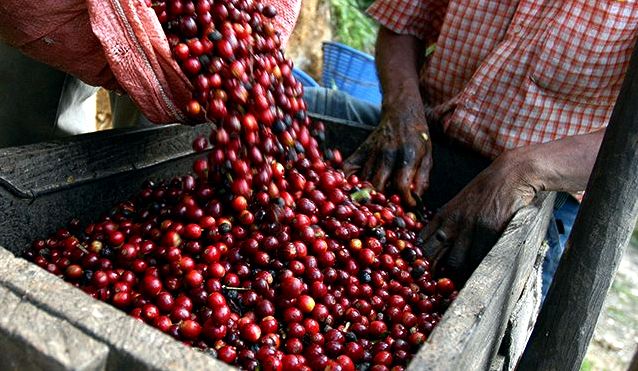 Guatemalan Coffee Workers Empty Beans for Sorting
Guatemalan Coffee Workers Empty Beans for Sorting
Guatemala created 204,000,000 kilograms of espresso beans in 2015, as well as their production figures have continued to be fairly consistent in the last couple of years. Espresso beans are with Guatemala in a long time in which the temperature hovers between 16 and 32°C, and also at altitudes between 500 and 5,000 metres above ocean level. Guatemala was Central America’s top producers till it had been surpassed by Honduras this year.
Guatemala arrived to the coffee game predominantly to locate an export to exchange indigo and cochineal, a couple of their early exports which were made useless once fabric dyes came to be within the 1800s. At that time, the federal government started an insurance policy of support for that industry by providing trade and tax benefits. Within the 1960’s the federal government further pressed for greater global interest in Guatemalan coffee with the establishment of Anacafé (Asociación Nacional del Café), an advertising and marketing association which, even today, is constantly on the promote the country’s coffee products worldwide.
9 – Mexico 257,940 US tons
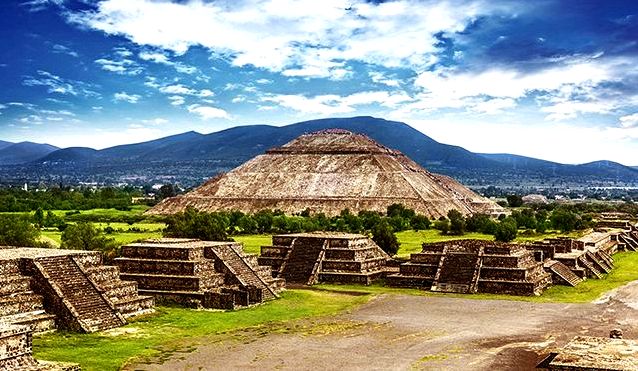 Ancient Pyramids in Mexico
Ancient Pyramids in Mexico
In 2015, Mexico created over 234,000,000 kilograms of espresso beans. The country predominantly produces top quality Arabica beans grown within the seaside regions close to the border of Guatemala and accounts for most of U.S. coffee imports.
Within the 1990s there is an emergency in Mexico’s coffee production, because the Worldwide Coffee Agreement was dismantled and worldwide coffee prices and export quotas weren’t any longer strictly controlled, resulting in an lack of ability for Mexico to compete within the global market. This loss of coffee prices and production brought to lost earnings and social issues through the nation of Mexico. While coffee production declined within the 90s and in to the 2000s, steady demand in the U . s . States has brought to some recovery within the Mexican coffee market, from a record low of just one.seven million bags (60 kg) in 2005, to 4. million in 2014.
8 – Uganda 314,489 US tons
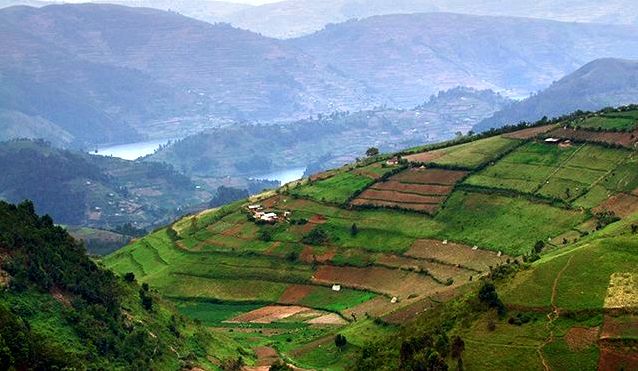 The Ugandan Virunga Mountain tops
The Ugandan Virunga Mountain tops
While Uganda might not spring to mind whenever you consider coffee production, at 285,300,000 kilograms created in 2015, it’s the Central African nation’s top-earning export. It’s moved past Mexico in 2015 to get the eighth largest producer of coffee. The country grows both Robusta beans – a crop indigenous to the Kibale forest area – in addition to Arabica beans from nearby Ethiopia.
Coffee is a crucial area of the Ugandan economy, having a large area of the population employed in coffee related industries. Coffee production was a relatively unsuccessful condition-controlled sector, however, after government privatization in 1991, a powerful revival from the sector was seen, resulting in a 5100% rise in production since 1989. However, the federal government does still exert control around the industry, with flow overseas controlled through the Uganda Coffee Development Authority.
7 – Honduras 380,296 US tons
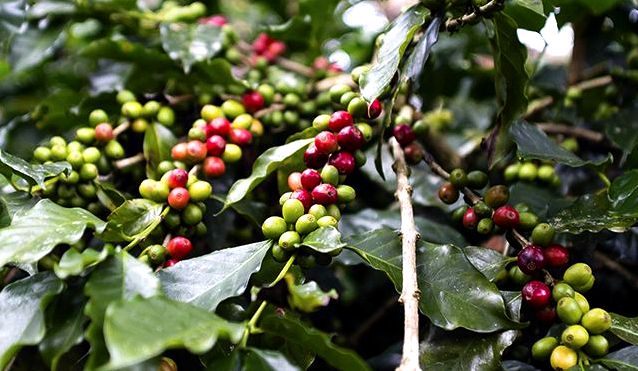 Eco-friendly and Red Coffee Berries on Tree, Honduras
Eco-friendly and Red Coffee Berries on Tree, Honduras
Honduras created 345,000,000 kilograms of coffee in 2015, almost matching its peak crop from 2011’s crop of 354,180 kilos. It’s since 2011 become Central America’s top coffee producer. They still face problems related to too little national branding – some people recognize Colombian or Ethiopian coffee, beans from Honduras mostly are utilized in blends and therefore are therefore less recognizable towards the average consumer.
However, coffee remains part from the Honduran economy it’s the largest producer in Guatemala, the coffee industry constantly provides employment and revenue for most of people, also it likely stored the country’s economy afloat throughout the 2009 political crisis and coup d’état.
6 – India 385,786 US tons
 Mug of coffee with Cinnamon, Sugar, and Raw Beans – Thinkstock.com
Mug of coffee with Cinnamon, Sugar, and Raw Beans – Thinkstock.com
While India might not be the very first nation you think of with regards to coffee production, they created 349,980,000 kilograms of beans in 2015. Not only any region from the diverse nation is equipped for coffee production, nearly all growing is performed within the hilly tracts of South Indian states. The beans are grown by small growers in monsoon rain fall conditions, and frequently grown alongside spices for example cardamom and cinnamon, which provides the coffee a spicy taste and aroma. In 2004, Indian Coffee brand Tata won 3 gold medals in the Grand Cus De Coffee shop Competition.
As may be expected, coffee is not typically the most popular beverage in the united states of just one.25 billion people, this title would go to tea. As a result, 80% of India’s coffee production is bound for export purposes, using the primary buyers being Europe and Russia.
5 – Ethiopia 423,287 US tons
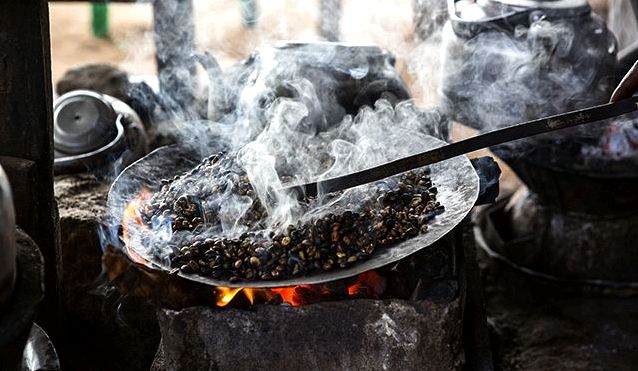 Coffee Roasted within the Traditional Ethiopian Manner
Coffee Roasted within the Traditional Ethiopian Manner
Ethiopia produces bulk of espresso beans each year, with 384,000,000 kilograms in 2015 alone. Ethiopia may be the geographic home of Arabica coffee, typically the most popular beans worldwide. It’s no small a part of their economy – over 28% of Ethiopia’s yearly exports are due to coffee – which is believed that 15 million citizens operate in coffee production.
Ethiopia includes a very wealthy coffee culture. For more than 1100 years, beans having a stimulating effect happen to be noted in america by unlucky maqui berry farmers and shepherds whose herds became of eat them. Since domestication from the plant and the start of farming the beans, regional variants from the Arabica bean happen to be developed, each using their own characteristic name and taste. The Harar, Limu, Sidamo, and Yirgacheffe beans are trademarked types of the Arabica bean, using the legal rights owned and guarded through the government of Ethiopia.
4 – Indonesia 814,629 US tons
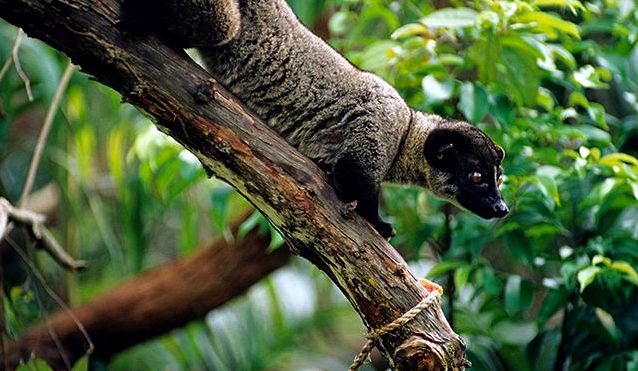 Palm Civets are Producers from the World’s Most Costly Coffee
Palm Civets are Producers from the World’s Most Costly Coffee
Though they are certainly not as worldwide referred to as a top producer, the country of Indonesia created over 660,000,000 kilograms of espresso beans in 2015. Indonesia has chosen a sum over quality method, because the weather conditions are more appropriate for producing lower-quality Robusta beans (less valued compared to Arabica beans which come from nations like South america and Colombia) but we have an ideal physical location for coffee plantation, because it is close to the equator and it has numerous mountainous regions which are perfect for coffee production.
Coffee production was brought to Indonesia by Nederlander settlers and production ongoing on after colonization as Indonesia’s weather conditions are perfect for the guarana plant. Coffee plantations presently cover over a million hectares of Indonesia’s territory, with more than 90% from the cropland being labored by small-scale producers.
One top quality coffee that Indonesia is known for is Kopi Luwak, an costly bean which has a unique production method. The palm civit, the cat like animal which resides in the jungles of East Asia, eats the raw coffee berries yet cannot process hard beans within the berry. This enzymatic juices from the civit partly break lower the bean, and upon defecation the “deposits” are collected, cleaned, and offered as Kopi Luwak beans. Think that’s weird? Since 500kg from the “Cat Poop Coffee” is created each year, coffee made from all of these beans sell for approximately $80.
3 – Colombia 892,871 US tons
 Coffee Fields within the Colombian Andes Mountain tops
Coffee Fields within the Colombian Andes Mountain tops
Colombian coffee is known worldwide, possibly partly because of the well-known advertisements for that National Federation of Coffee Growers of Colombia which featured a personality named Juan Valdez. However, climate has lately been playing an adverse role in Colombian coffee production. Between 1980 and 2010, temperatures have gradually risen, as has precipitation, both factors that jeopardize the weather needs essential to produce the kind of bean favored in Colombia. It had been typically second to South america for coffee production but has gone to live in third due the quickly expanding manufacture of Vietnam. Despite the result of climate, we have an creation of 810,000,000 kilograms of espresso beans in 2015, Colombia remains a vital player within the worldwide coffee game.
2 – Vietnam 1,818,811 US tons
 Traditional Vietnamese Coffee – Thinkstock.com
Traditional Vietnamese Coffee – Thinkstock.com
Even though many understand Vietnamese coffee, a signature drink in which the coffee is combined with sweetened condensed milk, Vietnam is the second biggest coffee producing nation on the planet – 1,650,000,000 kilograms in 2015 alone. While there is understandably a hiatus after and during the Vietnam war, coffee continued to be an enormous area of the Vietnamese economy, using the only greater export grain being grain. Vietnam rapid expansion in coffee production that was only 6,000 tons in 1975 and today is nearly two million has moved these to second place.
1 – South america 2,859,502 US tons
 South america Tops the Worlds Coffee Producers – Thinkstock.com
South america Tops the Worlds Coffee Producers – Thinkstock.com
While South america is regarded as the key exporter of gorgeous models, they are also the undisputed largest coffee-producing nation on the planet. In 2014, South america created an astounding 2,594,100,000 kilograms of espresso beans. It’s not a brand new development, as South america continues to be the greatest global producer of espresso beans for more than 150 years.
Coffee plantations cover about 27,000 square kilometers of South america using the majority situated in Minas Gerais, Sao Paulo, and Parana, three southeastern states in which the climate and temperature are perfect for coffee production. South america also distinguishes itself using their company coffee producing nations for the reason that Brazilians process coffee using the dry process (filthy coffee), in which the coffee cherries are dried under the sun instead of washed inside a wet process.
Resourse: http://worldatlas.com/articles/
“>
